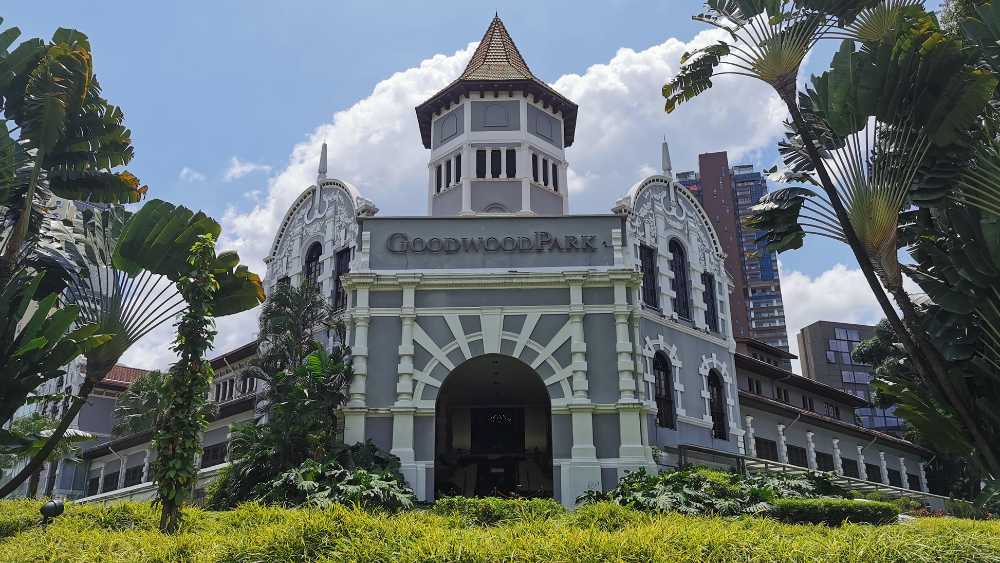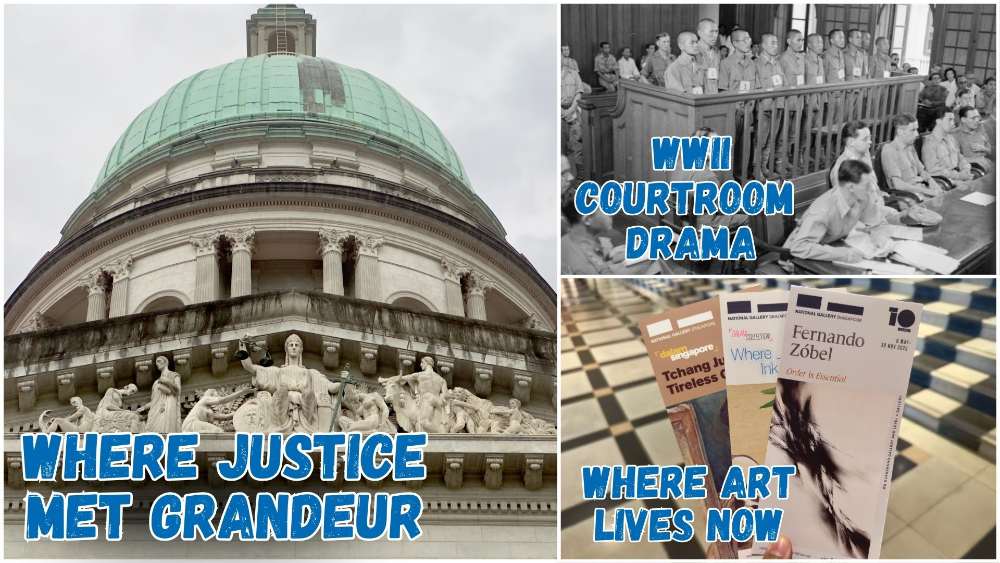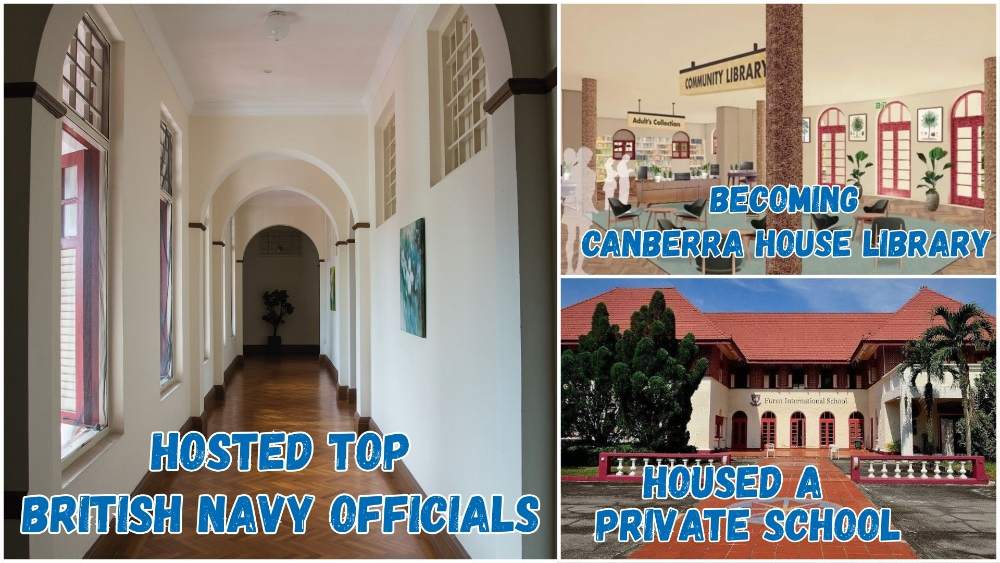National Monuments Of Singapore: Goodwood Park Hotel (Tower Block)
What is a National Monument? Who gazettes them? How many national monuments are there in Singapore? To date, the Preservation of Sites and Monuments, a division of National Heritage Board, has identified and gazetted 75 buildings, structures and sites of national significance as an integral part of Singapore’s built heritage.
And we're here to tell you all about them - one National Monument at a time!
You've probably passed by or stepped into more than a few of them without realising they were National Monuments: Al-Abrar Mosque, Asian Civilisations Museum, the Civilian War Memorial, Saint Andrew's Cathedral, the Esplanade Park Memorials, Fort Siloso on Sentosa - no need to plan an itinerary for friends visiting from overseas; just show them this article ✌️
In this edition, we delve deeper into the first hotel in Singapore to have a swimming pool on its premises, Goodwood Park Hotel.
📍 Location
Goodwood Park Hotel (Tower Block) was the 22nd building to be gazetted as a National Monument. Located near other National Monuments such as Saint George's Church, and the Istana and Sri Temasek, the MRT stations nearest to Goodwood Park Hotel are Newton, and Orchard.
📅 Significant dates
Date built:
- 1900: Deutsches Haus, or German House, was built where Goodwood Park Hotel today stands
Milestones:
- 1856: Teutonia Club was founded
- 21 Sep 1900: Deutsches Haus was officially opened by then-Acting Governor of the Straits Settlements Alexander Swettenham
- 1918: The Jewish Manasseh brothers bought over the property, and renamed it Goodwood Hall
- 1929: The Manassehs transformed Goodwood Hall into Goodwood Park Hotel
- 1968: Singaporean banker Tan Sri Khoo Teck Puat purchased it; the hotel is still under the ownership of the Khoo family till today
Date gazetted: 23 Mar 1989
📜 History
The Tower Block of today’s Goodwood Park Hotel was originally home to the German Teutonia Club, one of Singapore’s earliest European social clubs. Goodwood Park Hotel also symbolises Singapore’s thriving colonial-era hotel industry.
Germans first came to Singapore in the mid-19th century to work in trade and shipping. In the 1850s, the community formed a male-voice choir, Liedertafel (loosely translated as “song table”), which became popular, performing at charity events.
In 1856, seven German merchants founded the Teutonia Club. The club moved several times before acquiring land on Scotts Road in 1861 for a dedicated clubhouse.
By 1899, the club needed a lot more space. Architect Regent A. J. Bidwell, from the famed architectural firm Swan & Maclaren, was commissioned to design a grand new clubhouse, which opened in 1900 as the Deutsches Haus, or German House. (Bidwell was also responsible for the final designs of Victoria Theatre and Victoria Concert Hall – another National Monument of Singapore).
Deutsches Haus was officially opened with a grand ball on 21 Sep 1900 by then-Acting Governor of the Straits Settlements Alexander Swettenham.
World War I and the name "Goodwood"
When World War I began, the British seized Deutsches Haus, and the German community in Singapore either fled or faced internment. The building was then used as the headquarters of the Singapore Volunteer Force during the 1915 Sepoy Mutiny.
In 1918, the Jewish Manasseh brothers bought the property, renaming it Goodwood Hall (after the prominent Goodwood Racecourse in West Sussex, England). It became a popular venue for events and in 1922, hosted a performance by ballerina Anna Pavlova, one of the most famous ballerinas to have ever lived.
In 1929, the Manassehs transformed Goodwood Hall into Goodwood Park Hotel, joining Singapore’s other prominent colonial hotels, namely Adelphi Hotel, Hotel de l’Europe (where the Former Supreme Court now stands), and Raffles Hotel. Goodwood Park Hotel’s Tower Block was eventually transformed to house guest rooms.
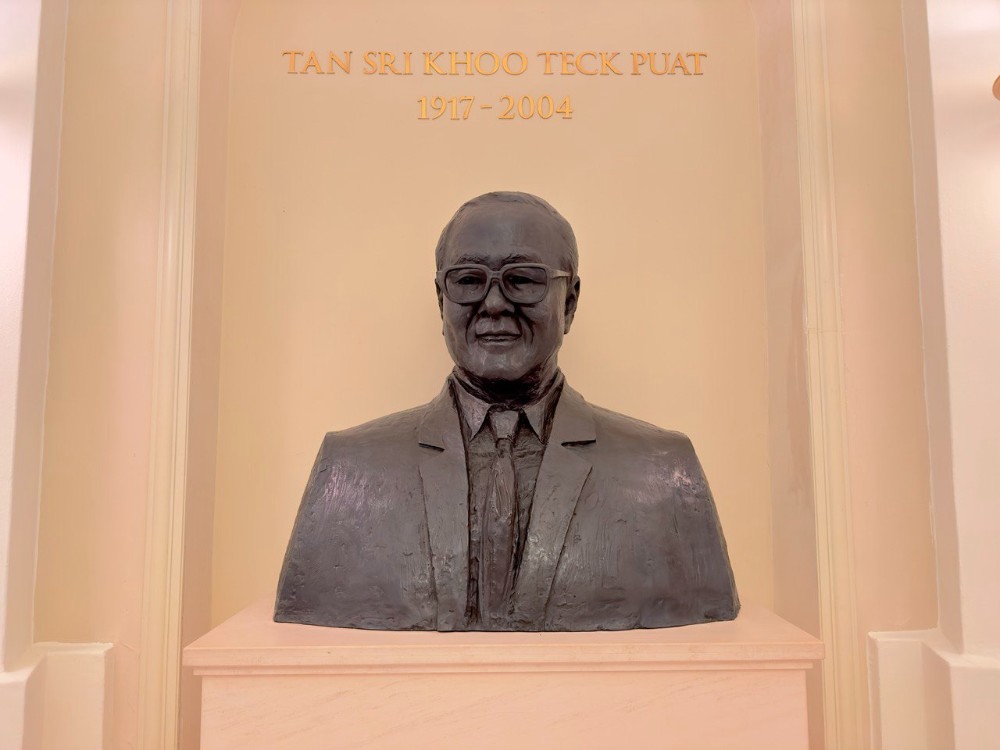 A bronze bust of Singaporean banker Tan Sri Khoo Teck Puat can be located inside the entrance to the Tower Block. | IMAGE: NG KAI
A bronze bust of Singaporean banker Tan Sri Khoo Teck Puat can be located inside the entrance to the Tower Block. | IMAGE: NG KAI
Japanese Occupation to the present
During the Japanese Occupation (1942-1945), the Japanese navy used the hotel as its headquarters, and after the war, the Allied forces temporarily repurposed it for war crime trials.
It was subsequently returned to Vivian Bath, a descendant of the Manasseh family, in 1947, and reopened as a hotel in the same year. And thanks to a forward-thinking idea by Bath, the hotel made local history as Singapore’s first to feature a swimming pool on its grounds!
In 1968, it was purchased by Singaporean banker Tan Sri Khoo Teck Puat. Since then, Goodwood Park Hotel has undergone numerous renovations, including the reconstruction of its tower’s pinnacle in the 1970s.
Over the years, many notable figures have stayed at the hotel, including Nobel Laureate Sir William Golding (renowned for his novel, "The Lord of the Flies"), author Roald Dahl, boxing legend Muhammad Ali, and actor Jackie Chan.
Currently, Goodwood Park Hotel is a 5-star luxury heritage hotel. Only its Tower Block has been gazetted as a National Monument.
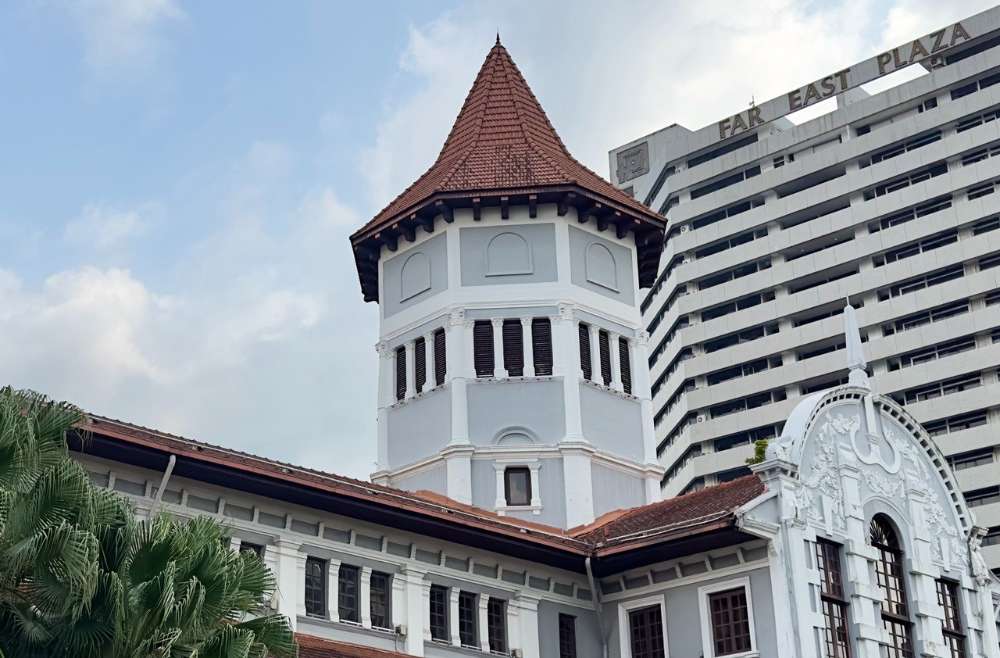 IMAGE: NG KAI
IMAGE: NG KAI
📐 Design and architecture
The Tower Block was inspired by the Queen Anne Revival architectural style, which was trendy in Britain during the late 19th century. It features elements like brick pediments (upper part of the front of a building), towers, and intricate mouldings, which all stand out on its elevated site. Its design, with a turret and ornate gables (the top ends of a wall), may also have been inspired by German Rhineland castles, reflecting its original purpose as the Teutonia Club.
🕖 Opening hours
The hotel is open 24/7. You can take a virtual tour of its premises here.
🎟️ Admission
Entry is free.
For the latest updates on Wonderwall.sg, be sure to follow us on TikTok, Telegram, Instagram, and Facebook. If you have a story idea for us, email us at [email protected].







